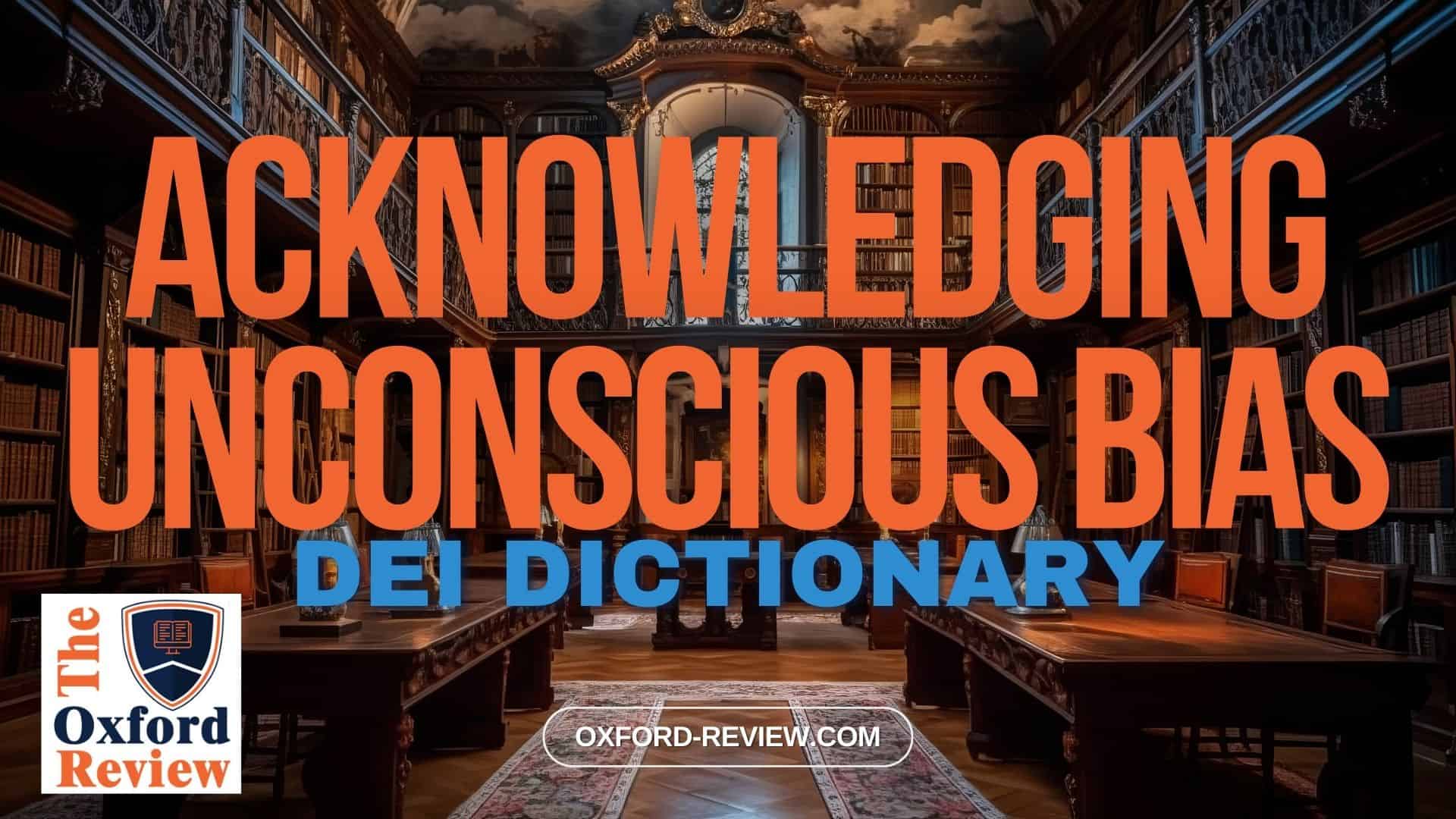Acknowledging Unconscious Bias – Definition and Explanation

Understanding and Addressing Unconscious Bias: A Key to Diversity, Equity, and Inclusion
In the realm of Diversity, Equity, and Inclusion (DEI), acknowledging unconscious bias is pivotal. Unconscious bias refers to the prejudices or attitudes we hold towards certain groups of people without even realising it. This phenomenon can profoundly impact our decisions, behaviours, and interactions, often perpetuating inequality and discrimination.
Definition:
Unconscious bias, also known as implicit bias, stems from our brain’s tendency to categorise and make quick judgments based on past experiences, societal stereotypes, and cultural norms. These biases operate without our conscious awareness, influencing how we perceive, evaluate, and interact with others. While they may not reflect our true beliefs, they can significantly influence our attitudes and actions.
Acknowledging Unconscious Bias:
Acknowledging unconscious bias is the crucial first step in fostering a more inclusive and equitable environment. It involves recognising that everyone, regardless of their intentions, harbours biases shaped by their backgrounds and experiences. By acknowledging these biases, individuals and organisations can take proactive measures to counteract their influence and promote fair treatment for all.
Strategies to Address Unconscious Bias:
- Education and Awareness: Educating individuals about the nature of unconscious bias and its impact is essential. Awareness-raising workshops, training programmes, and discussions can help people recognise their biases and understand how they manifest in various settings.
- Introspection and Reflection: Encouraging individuals to reflect on their own biases and assumptions is crucial. Self-awareness allows people to identify instances where their biases may affect their judgements or decisions, enabling them to challenge and mitigate them effectively.
- Implementing Bias Mitigation Techniques: Employing strategies such as stereotype replacement, perspective-taking, and counter-stereotypic imaging can help individuals override unconscious biases in their thoughts and behaviours.
- Diverse Representation: Promoting diversity in decision-making bodies, leadership roles, and media representation can mitigate the influence of unconscious bias. Exposure to diverse perspectives challenges stereotypes and fosters more inclusive attitudes and behaviours.
Example:
Consider a hiring manager tasked with selecting candidates for a job opening. Despite their commitment to fairness, they may unconsciously favour candidates who share similar backgrounds or characteristics, overlooking qualified candidates from underrepresented groups. By acknowledging their unconscious bias, the hiring manager can implement strategies such as blind resume screening or structured interviews to minimise bias and ensure a more equitable selection process.
Conclusion:
Acknowledging unconscious bias is paramount in advancing diversity, equity, and inclusion efforts. By understanding the pervasive nature of bias and implementing strategies to address it, individuals and organisations can create environments where all individuals feel valued, respected, and empowered to succeed.
References:
Allen, B. J., & Garg, K. (2016). Diversity matters in academic radiology: acknowledging and addressing unconscious bias. Journal of the American College of Radiology, 13(12), 1426-1432. https://www.sciencedirect.com/science/article/pii/S154614401630792X
Fiarman, S. E. (2016). Unconscious bias: When good intentions aren’t enough. Educational leadership, 74(3), 10-15. https://www.responsiveclassroom.org/wp-content/uploads/2017/10/Unconscious-Bias_Ed-Leadership.pdf
Fassiotto, M., & Girod, S. C. (2020). How to recognize and address unconscious bias. Roberts Academic Medicine Handbook: A Guide to Achievement and Fulfillment for Academic Faculty, 233-241. https://link.springer.com/chapter/10.1007/978-3-030-31957-1_26
Moule, J. (2009). Understanding unconscious bias and unintentional racism. Phi Delta Kappan, 90(5), 320-326. https://journals.sagepub.com/doi/abs/10.1177/003172170909000504?journalCode=pdka
Be impressively well informed

Get the very latest research intelligence briefings, video research briefings, infographics and more sent direct to you as they are published
Be the most impressively well-informed and up-to-date person around...
